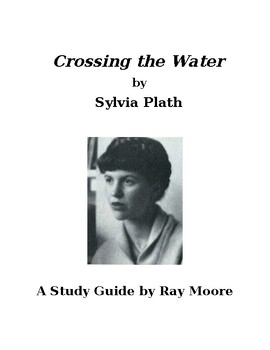"Crossing the Water" by Sylvia Plath: A Study Guide
- Word Document File
Description
"Crossing the Water" by Sylvia Plath: A Study Guide by Sylvia Plath: A Study Guide is a book-length guide (57,000 words approx.) to Plath's famous collection of poems published after her death. It aims to support close reading of these sometimes complex and difficult poems. The book may be used by individuals reading and reflecting on this text alone as well as by groups and classes reading, discussing and studying it.
There is a detailed introduction to Sylvia Plath's poetry with an emphasis on the problems of interpretation. For each poem (texts not included because they are still copyrighted) there are:
1. Pre-reading questions;
2. Guiding questions;
3. Helpful textual notes;
4. A detailed commentary;
5. Perspectives - collections of critical comments on the poem.
Also includes:
6. Guidance on the use of the questions in class/study groups;
7. List of useful literary terms with definitions;
8. Bibliography.
There are no answers to the guiding questions, but they are generally covered in the detailed commentaries.
NOTE: This is an ebook. The material may be adapted for classroom worksheets.





